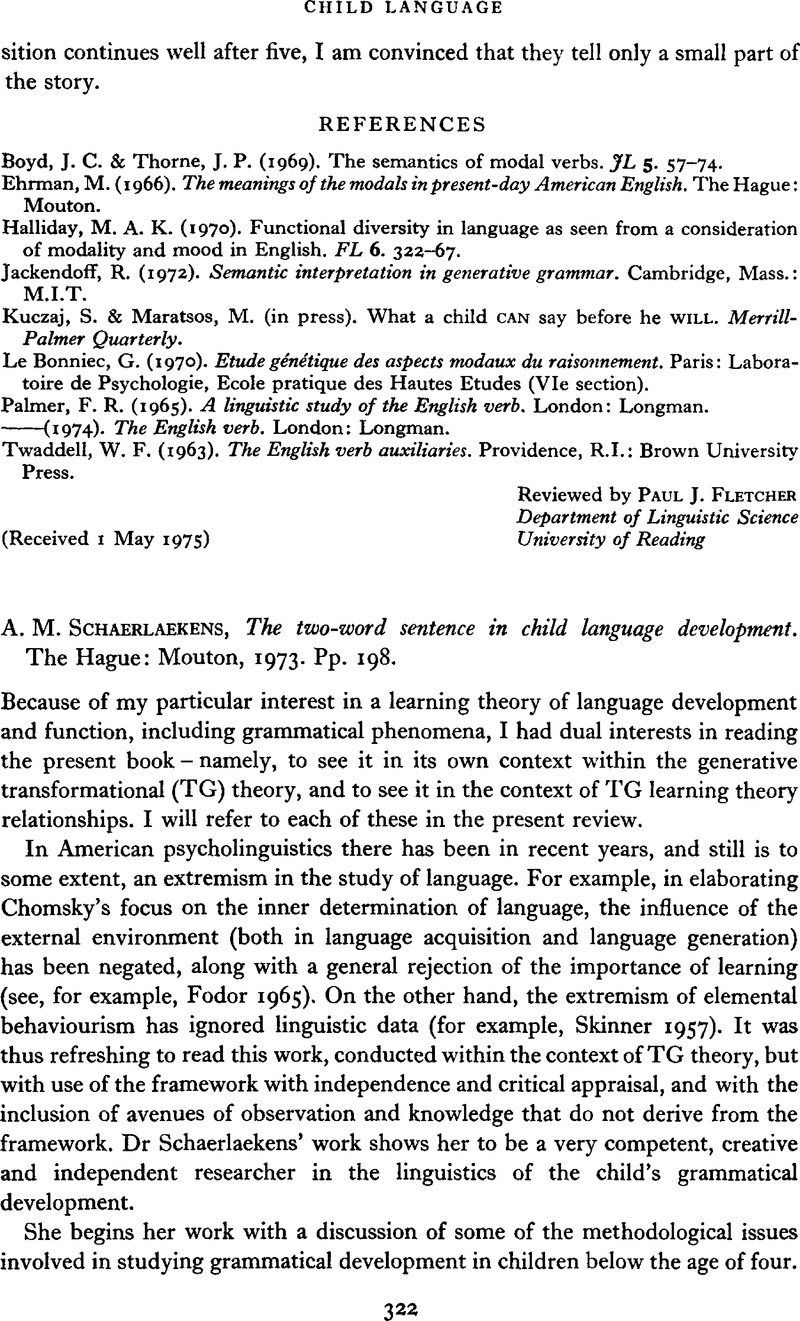Staats, A. W. (
1974). Behaviorism and cognitive theory in the study of language: neopsycholinguistics. In
Schiefelbusch, R. L. &
Lloyd, L. L. (eds),
Language perspectives: acquisition, retardation, and intervention.
Baltimore:
University Park Press.
Google Scholar 